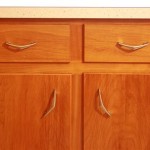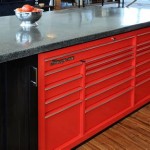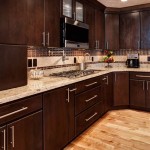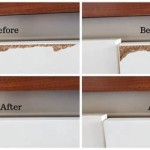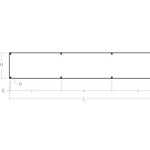Painting Non-Wood Kitchen Cabinets: A Comprehensive Guide
Rejuvenating the look of non-wood kitchen cabinets is an attainable DIY project that can transform the aesthetics of your kitchen without breaking the bank. However, it's essential to approach this task with the right techniques and materials to ensure a durable and visually appealing finish.
1. Prepare Your Cabinets:
Before you start painting, thoroughly clean your cabinets with a degreasing cleaner to remove any dirt, grime, or grease. Remove all cabinet doors and hardware, and lightly sand the surfaces with fine-grit sandpaper to promote paint adhesion.
2. Choose the Right Paint:
For non-wood cabinets, choose a paint specifically formulated for use on laminates, melamine, or thermofoil surfaces. These paints are designed to adhere well to these materials and provide a durable finish.
3. Apply a Primer:
A primer is essential for creating a smooth base for your paint and improving its adhesion. Apply a coat of bonding primer specifically designed for non-wood surfaces, allowing it to dry completely.
4. Paint Your Cabinets:
Using a high-quality brush or roller, apply several thin coats of paint, allowing each coat to dry thoroughly before applying the next. The number of coats needed will vary depending on the opacity of your paint and the desired finish.
5. Use a Clear Topcoat:
Once the paint has dried completely, apply a clear topcoat to protect the finish from scratches and wear. This is especially important for kitchen cabinets that receive a lot of use.
6. Add Hardware and Doors:
Once the topcoat has dried, carefully reattach the cabinet doors and hardware. Make sure to align the doors correctly and tighten the screws securely.
7. Cure the Finish:
Allow the painted cabinets to cure for at least 72 hours before using them heavily. This will give the paint and topcoat ample time to fully harden and reach their optimal durability.
Additional Tips:
- Test the paint and primer on an inconspicuous area first to ensure compatibility and color accuracy.
- Use a brush to paint around edges and details for a precise finish.
- Allow each coat to dry completely between applications to prevent peeling and chipping.
- Protect the floor and surrounding areas with drop cloths or plastic sheeting.
- Wear a respirator and gloves when sanding and painting for safety.
By following these steps and using the right materials, you can successfully paint non-wood kitchen cabinets and achieve a stunning new look for your kitchen.

How To Paint Laminate Kitchen Cabinets Perfect Finish Tips

How To Paint Laminate Kitchen Cabinets Perfect Finish Tips

Avoid These Mistakes How To Paint Cabinets That Are Already Painted Grace In My Space

How To Paint Laminate Cabinets Everything You Need Know

How To Paint Veneer Cabinets For A Long Lasting Finish Anika S Diy Life

How To Paint Kitchen Cabinets Like The Pros

How To Paint Laminate Kitchen Cabinets Perfect Finish Tips

How To Paint Laminate Cabinets Ace Hardware

How To Paint Kitchen Cabinets Without Sanding Or Priming

How To Paint Laminate Cabinets Everything You Need Know
Related Posts

